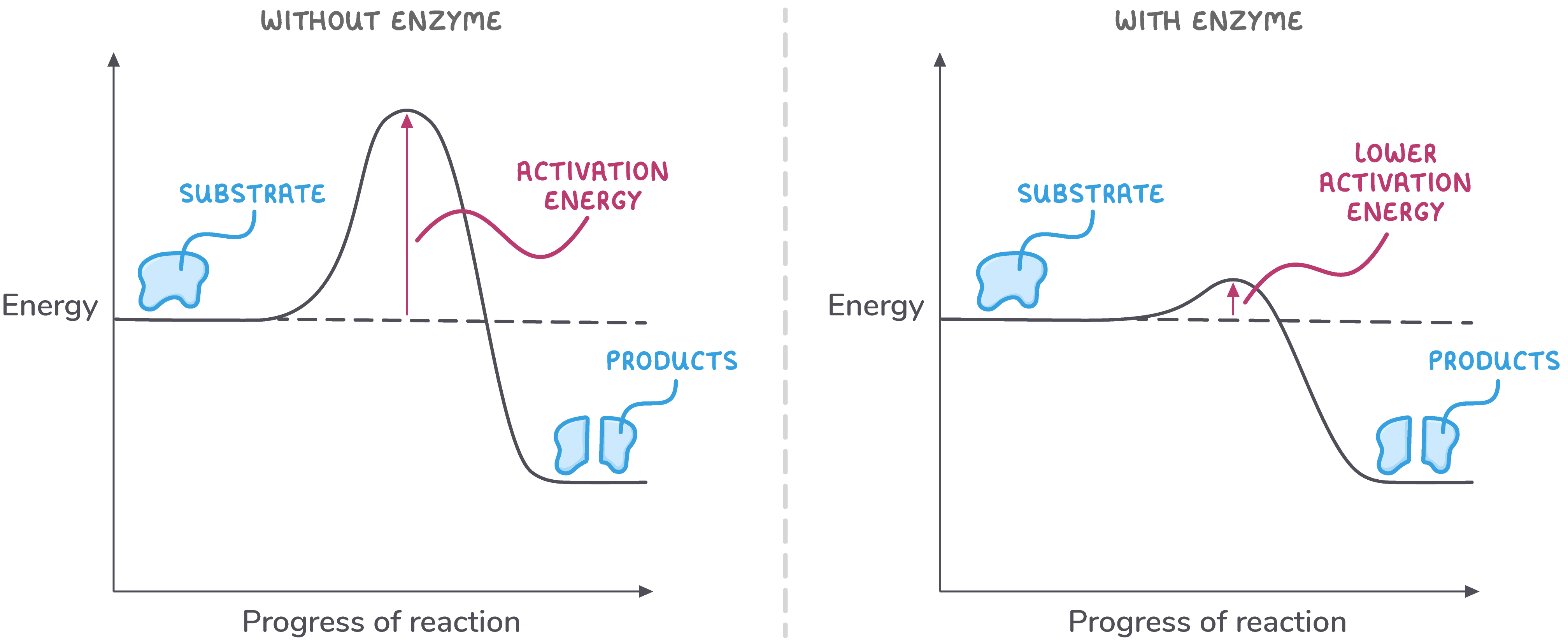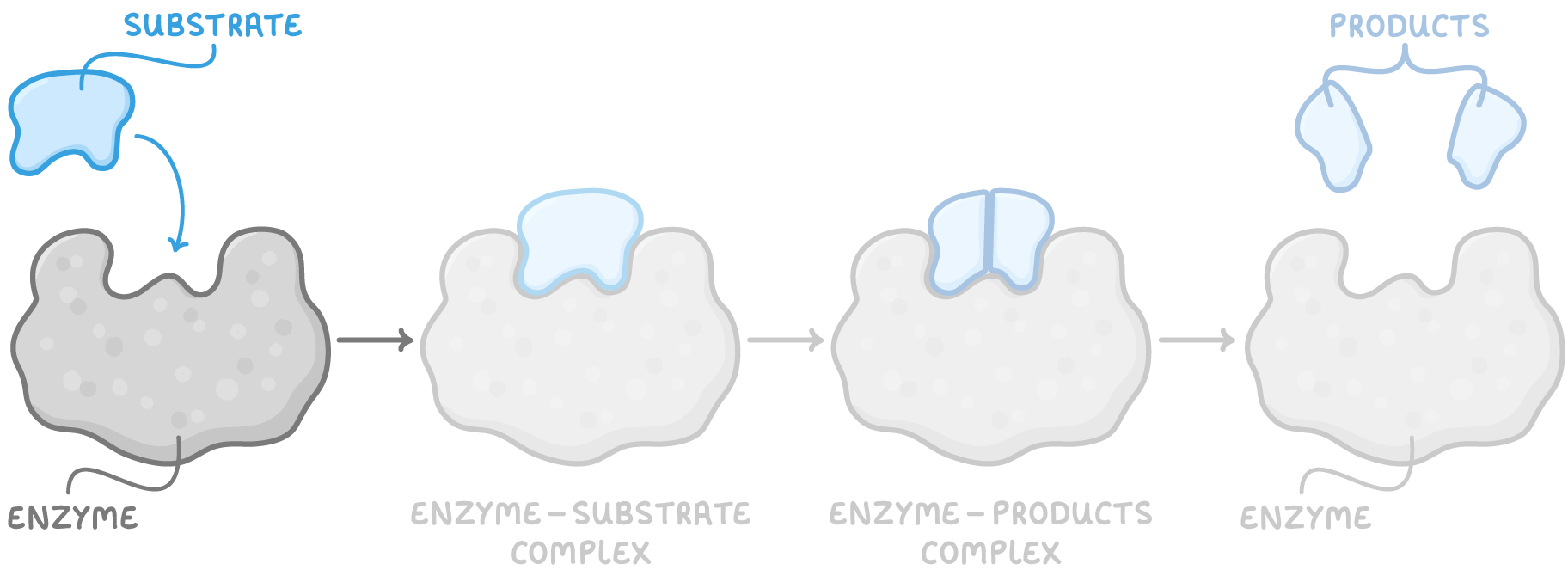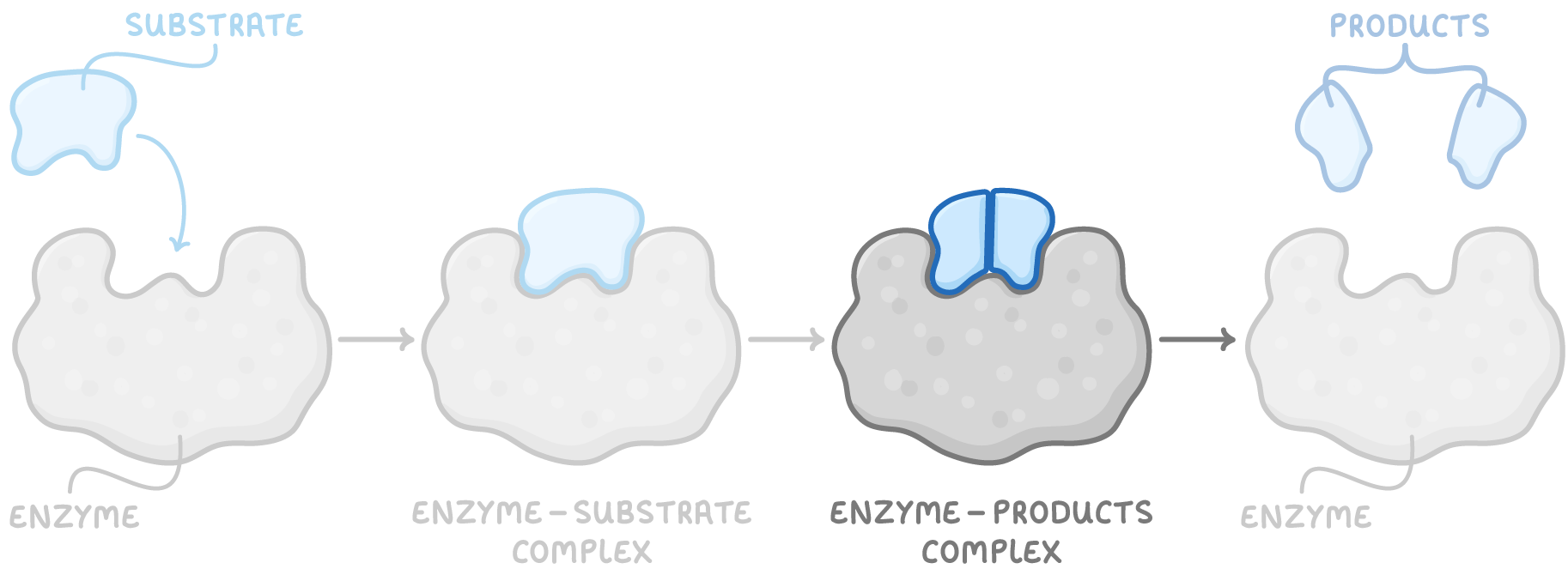Enzyme Action
This lesson covers:
- The role of enzymes in living organisms
- How enzymes speed up reactions
- The lock and key model of enzyme action
- The induced-fit model of enzyme action
Enzymes are biological catalysts Enzymes are globular proteins with complex and unique tertiary structures. They are known as biological catalysts because they increase the rate of a chemical reaction without being used up in the reaction itself. |
Enzymes speed up reactions All chemical reactions require a certain amount of energy to get started. This is known as the activation energy, and is most often supplied in the form of heat. Without sufficient activation energy, the reactant molecules will not have enough energy to break their bonds and form new ones to produce the desired products.  |
Enzymes work by lowering the activation energy for a chemical reaction. This means that reactions are able to take place at a lower temperature (e.g. body temperature). |
Intracellular enzymes and extracellular enzymes Enzymes can be grouped into two categories: intracellular enzymes and extracellular enzymes. Differences between intracellular enzymes and extracellular enzymes:
|
Enzymes bind with substrates  Enzymes have unique tertiary structures which determine the shape of their active site. This shape is complementary to the substrate. |
Two models of enzyme action Scientists originally proposed the lock and key hypothesis to explain how enzymes work. More recent evidence has given rise to the induced-fit model. |
The lock and key model  In this model, the substrate fits perfectly into the enzyme's active site in the same way that a key fits into a lock. |
Induced fit model  In this model, the substrate does not fit perfectly into the enzyme's active site. As the substrate enters the enzyme, the active site changes shape slightly. This puts a strain on the substrate's bonds which lowers the activation energy. |


